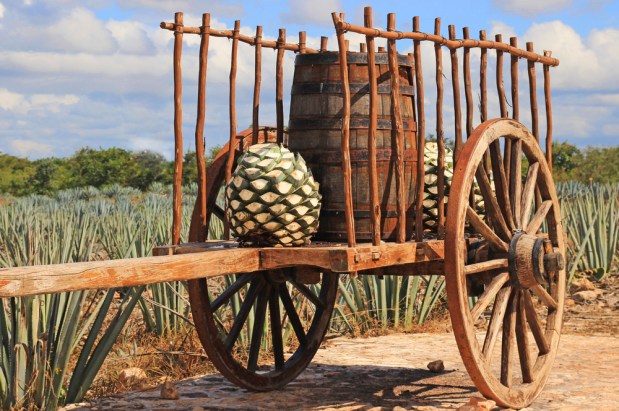Swill is our bi-monthly column dedicated to liquor, wine, beer, and every other delicious dram that falls under the broader umbrella of booze. But it’s more than just tasting notes scribbled on a cocktail napkin — Swill is about getting outside of your comfort zone, trying new things, and exploring the big, wide world of libations. One week you might catch us halfway through a bottle of single-malt scotch, and the week after that we might be buzzing on some Ugandan moonshine made from bananas. This column is just one big boozy adventure, so grab yourself a glass and join us for another round.
If you don’t already know about mezcal, it’s high time you learned. Think of it like tequila’s older, dirtier, and vastly more interesting cousin. Even if you’re not a fan of tequila, you need to get your hands on a bottle and try it out. It’s a completely different world.
Technically speaking, tequila just a very specific type of mezcal — one made with very specific ingredients (blue agave), inside of a very specific region of Mexico. Mezcal is also made from agave (also known as maguey), but it’s not limited to just one variety of it, so as a category, the range of flavors it contains is far broader than plain-old tequila.
You may not have realized it until now, but agave isn’t just one plant. It’s actually an entire genus of plants, with a plethora of different species under its umbrella. So in a lot of ways, agave is to mezcal as grapes are to wine — there’s hundreds of different types, and oftentimes mezcal isn’t made from just one. Many mezcals contain blends of alcohol distilled from different agave types, all of them grown, prepared, fermented, and distilled a different ways.

After the agave plants are harvested (after about seven to eight years of growth) their leaves are removed, leaving only the sugar-laden heart, or piña. The next step is to cook them — but unlike tequila, which is made by cooking piñas in gigantic, stainless steel, above-ground ovens, mezcal piñas are cooked in a large conical pit dug into the ground. Here, in these stone-lined pits (called palenques), the piñas are covered in their own severed leaves and cooked over a wood fire for two or three days. During this time, the heat of the fire caramelizes the sugars inside the agave heart, while the burning wood helps to imbue them with rich smoky flavors.
The end result is a spirit that, to many people, tastes something like the bastard child of tequila and scotch. Up front you get the distinctly tequila-like flavors of distilled agave, but they’re commingled with a charry/smokey kick that’s vaguely familiar to the peaty flavor of a good 12-year-old single-malt.
‘Nuff said. Now go get yourself a bottle.


